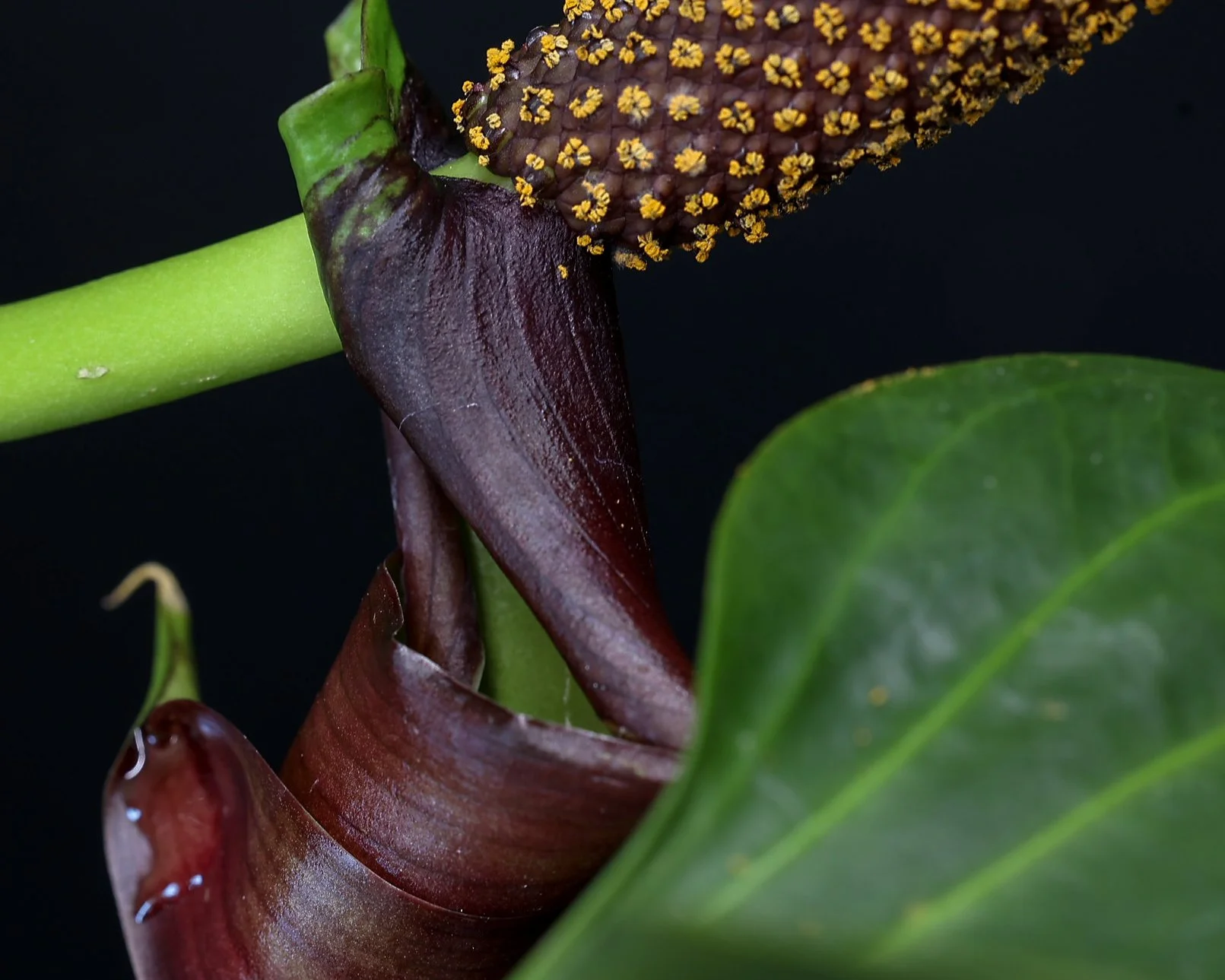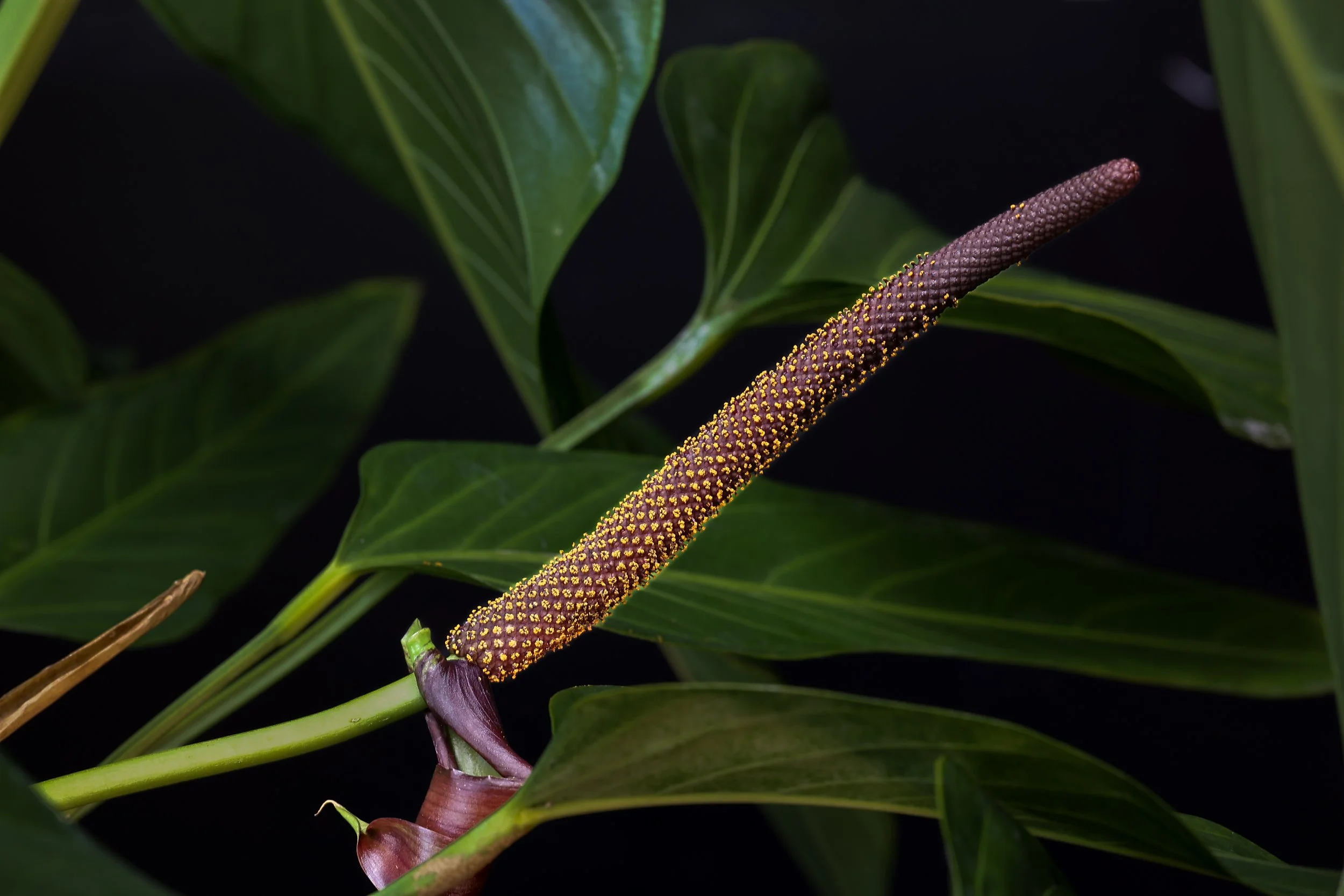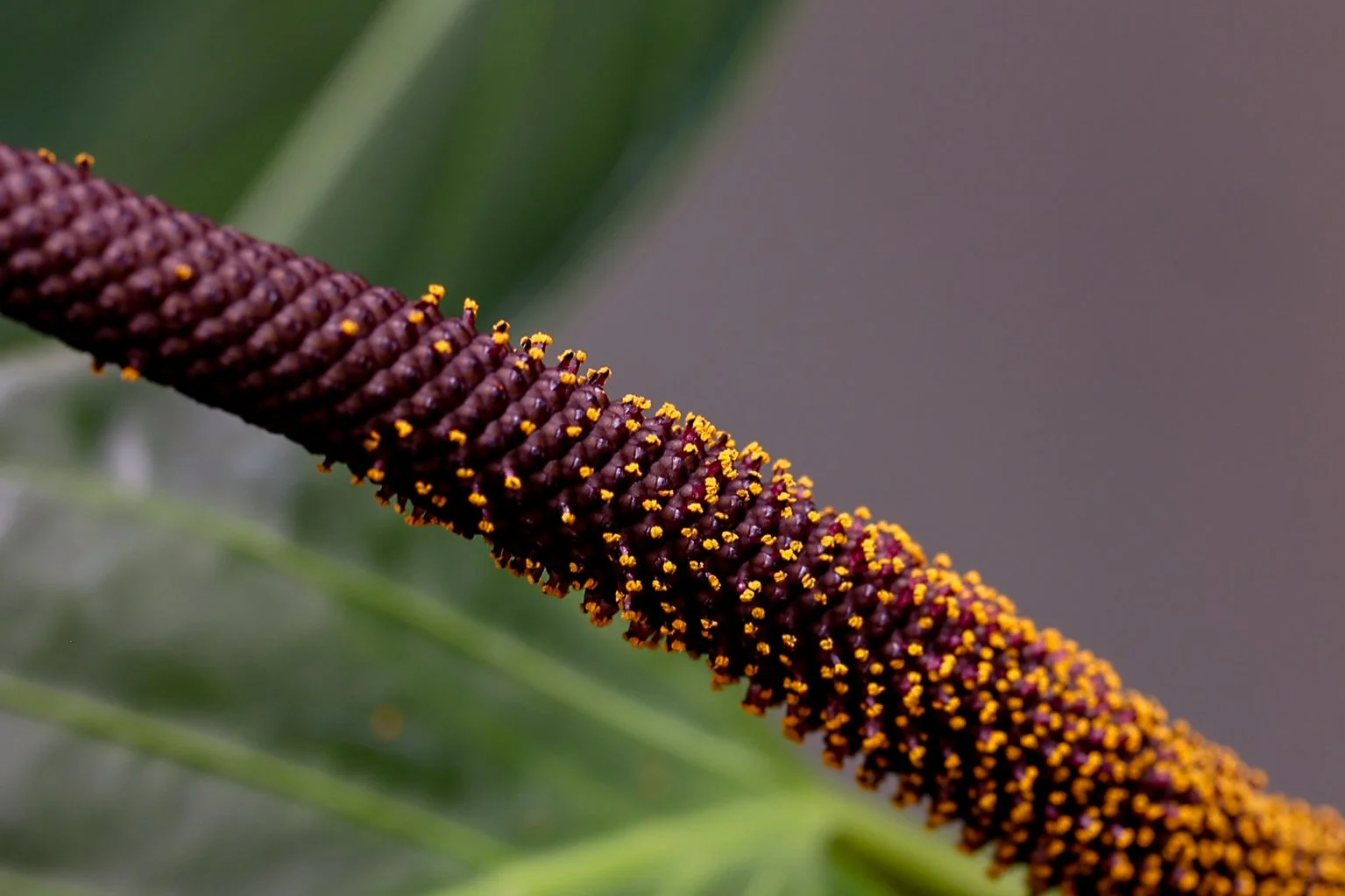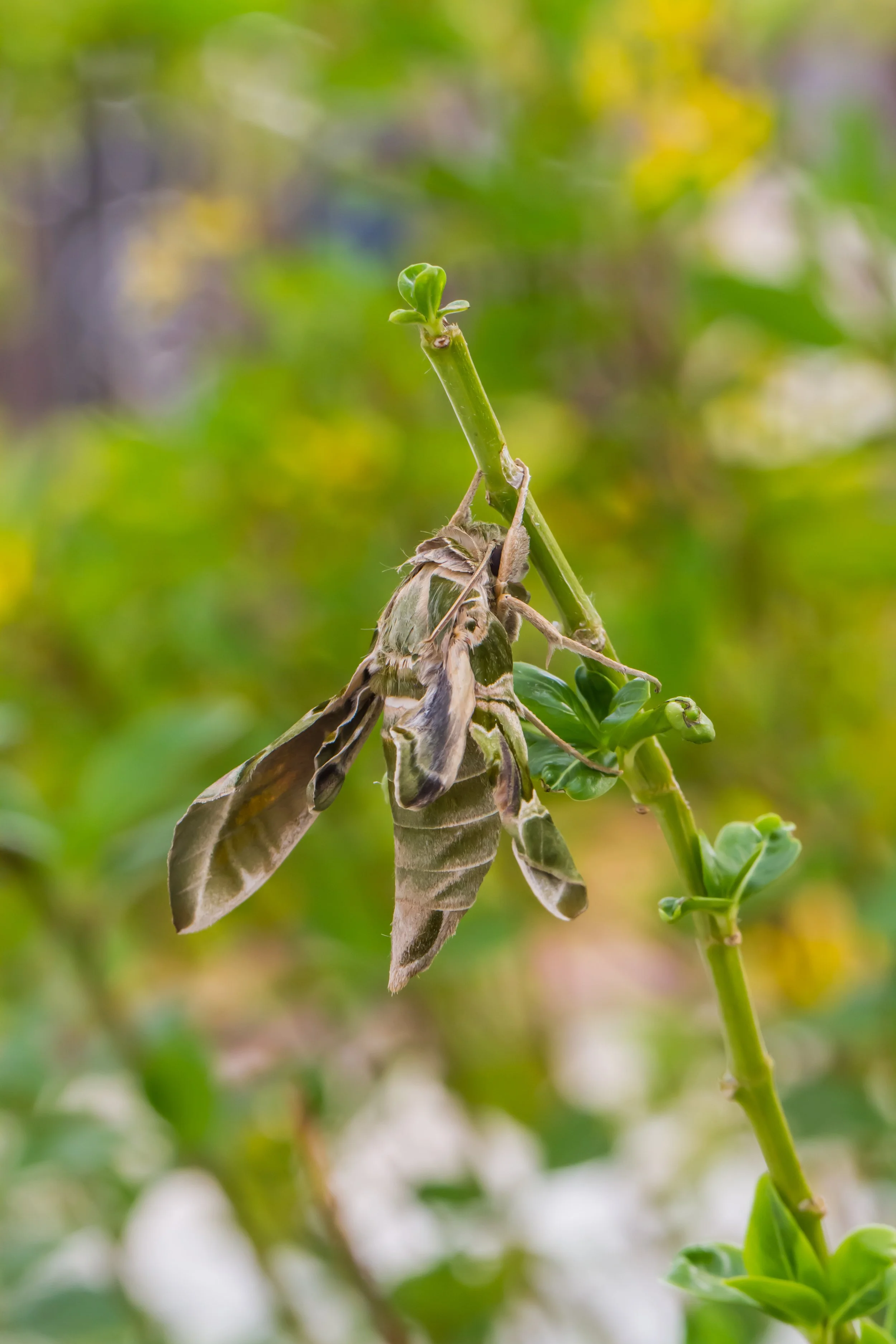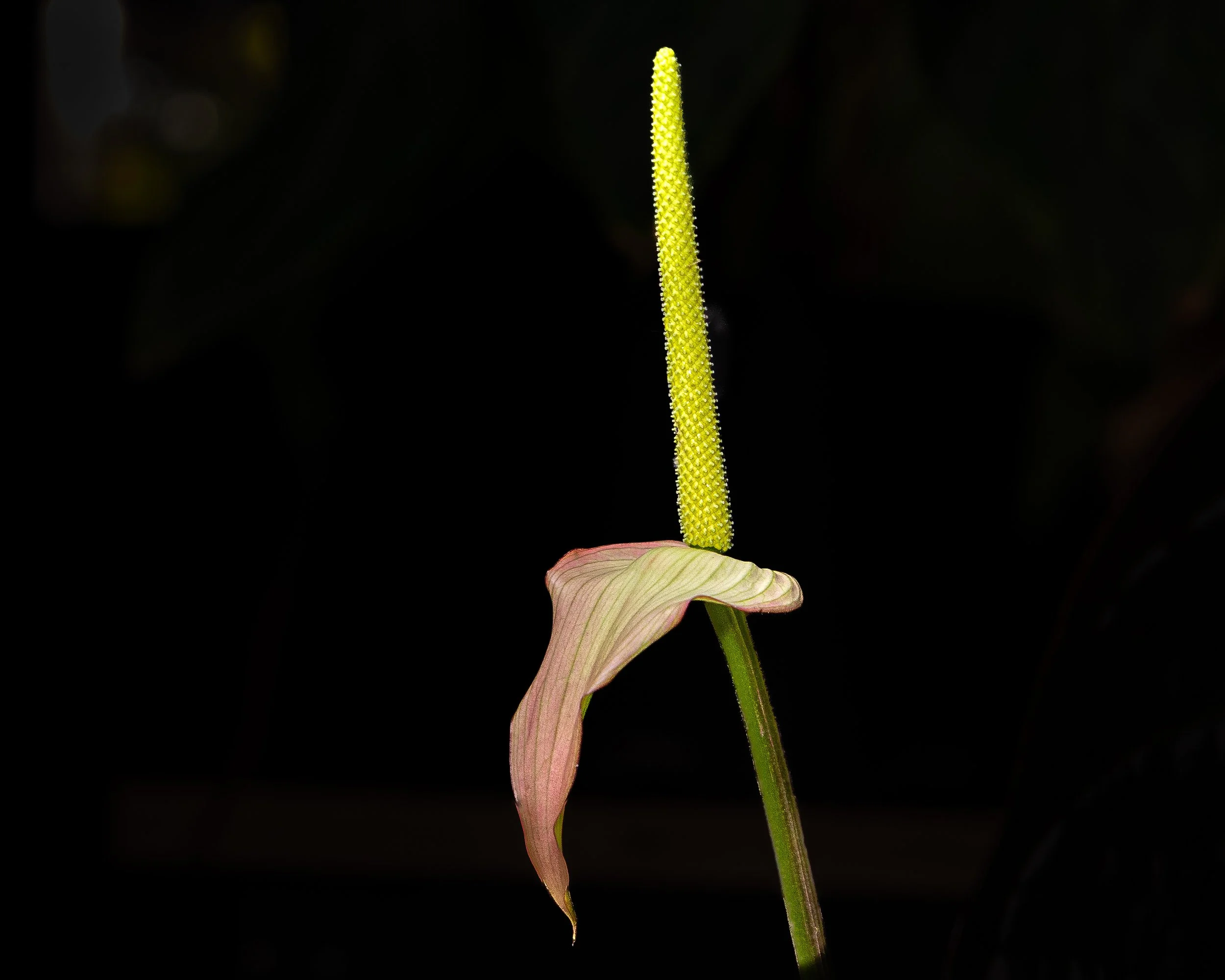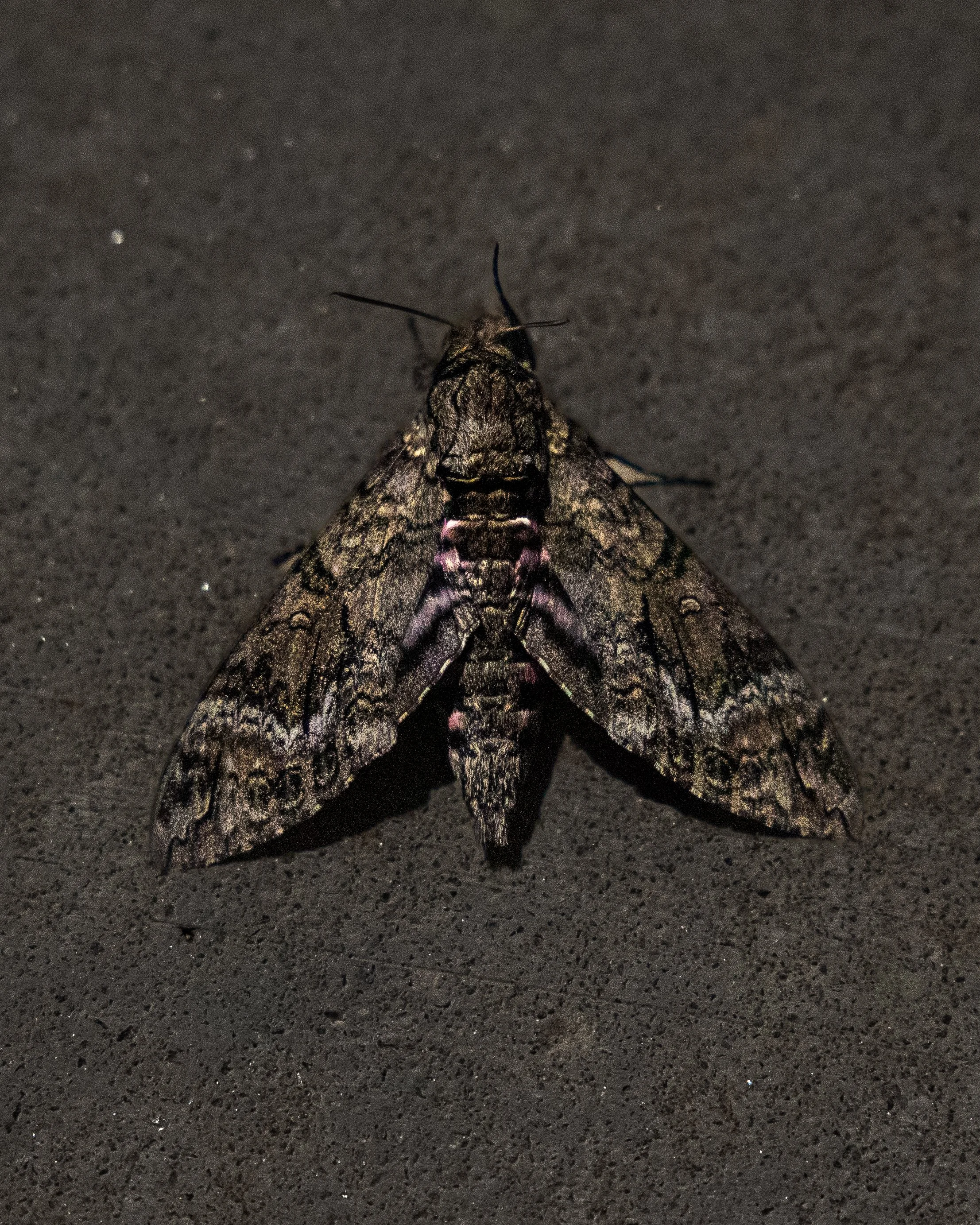Shadows: Hawk Moths with super powers and tips for optimized sleep.
Shadows: a prelude to Shadow Mutualism.
First notes toward Shadow Mutualism — plants, moths, and the medicine of night.
Manduca sexta visiting night bloomers. 30% of all flowers may be pollinated in the darkness of night.
Night isn’t just the absence of light; it’s when repair begins. For humans, sleep is brain maintenance. The glymphatic system*¹ flushes out waste, memories reorganize, and clarity returns. Across cultures, the advice is nearly identical: cool the body, quiet the mind, and step into real darkness. Ayurveda prescribes cooling oils, Traditional Chinese Medicine calls for yin activities, and modern neuroscience says dim the lights and let melatonin flow. Different languages, same truth: night is medicine.
Hovering Hawk Moth, family Sphingidae copyright 2025 Pichit1422
Full Moon, NC Spring 2025. Author’s image, copyright 2025.
The same rhythm plays out in the tropics. As soon as the sun drops, pollinators wake. Sphinx moths*² hover like midnight hummingbirds, carrying pollen farther than bees ever could. Some even click ultrasonic jammers to scramble the sonar of hunting bats: evolution writing defense strategies in the dark. Bats themselves become couriers of genetic diversity, moving pollen between canopy trees and understory plants. Meanwhile, beetles crawl into night-blooming flowers, following heat and scent trails older than agriculture itlself.
Anthurium inflorescence belonging to the “Black Magic’ hybrid grown here in the Garage Tropics. Author’s plant and image, copyright 2025.
Aroids*³, of course, take the theater further. Some heat their spadices like living radiators to send their perfumes across the understory. Others glue resin onto beetle backs so pollen stays put. It’s messy, ingenious, and essential. Night is not quiet it’s just hidden. Brains are clearing, forests are regenerating, and life is busy in the shadows.
In Situ
Here are a few practical rituals I fold into my own nights:
Lukewarm shower + hygiene but make it conscious, a ritual rather than a chore.
Low-impact media diet an hour before bed, swap action movies and heavy drama for something gentler: a nature doc, a book, or just a quiet conversation.
Seven-minute mindfulness sit, breathe, and observe thoughts without trying to control them. A small pause that shifts the whole night.
Notes
*¹ Cool the Mind and Body (Science + Ayurveda)
Neuroscience shows that the brain’s glymphatic system (its cleanup crew that clears metabolic waste, including amyloid plaques linked to Alzheimer’s) activates best in deep sleep, which is easier in a slightly cooler environment (65–68°F / 18–20°C). Ayurveda has long emphasized reducing “pitta” (excess heat) before bed with cooling herbs like brahmi (gotu kola) tea, light coconut oil scalp massage, or lukewarm showers.
🌀 Modern + traditional both say: let the brain cool to repair itself.
*² Xanthopan’s stealthy anti-bat sonar jammer
In Madagascar, Wallace’s sphinx moth (Xanthopan morganii praedicta) doesn’t just hover it produces ultrasonic clicks to jam bat echolocation. A predator-defense adaptation once thought unique to a few bats.
*³ Araceae, the theater of cantharophily
Aroids are notorious for elaborate pollination strategies with beetles (scarabs, nitidulids, etc.). Philodendron adamantinumand others produce resin on the spadix that beetles walk through, gluing pollen to their exoskeletons for guaranteed transfer. Other genera (Anthurium, Amorphophallus, Dieffenbachia) use thermogenesis + odor (heating up to amplify scent plumes) and sometimes temporarily trap beetles overnight in floral chambers. When released, the beetles leave dusted in pollen. The classic term: cantharophily (beetle pollination).
How these things begin.
native NC Hawk-moth Manduca sexta image captured by me 2025.
📓 Further Reading (Field Notes in the Margins)
Moths as Midnight Pollinators National Audubon Society piece on how sphinx moths actually keep Florida’s ghost orchid alive.
Wallace’s Long-Nosed Moth A short history of Darwin predicting Xanthopan morganii praedicta before it was ever caught, and the discovery of its bat-jamming clicks.
The Heat and Scent of Aroids A deep dive into thermogenesis and beetle pollination in Araceae. Includes field studies from Brazil on Philodendron and Anthurium species.
(All best read with a real notebook at hand ; I use Field Notes. Analog notes, analog brain. Subtle, but it works.)

